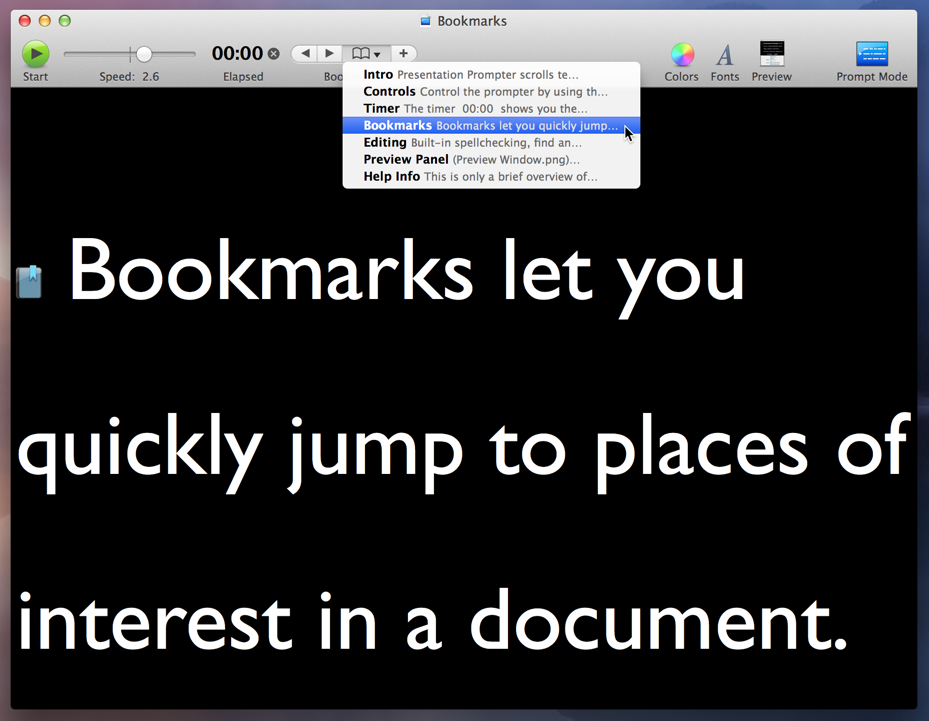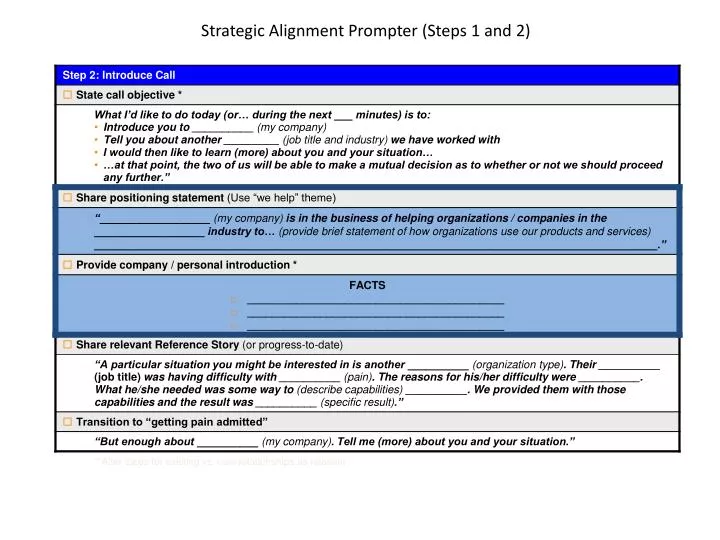

Online presentation prompter full#
Notes or cue cards, on the other hand, require the presenter to look at them instead of at the lens, which can cause the speaker to appear distracted, depending on the degree of deflection from the natural line of sight to the camera lens, and how long the speaker needs to glance away to glean the next speaking point speakers who can internalize a full sentence or paragraph in a single short glance timed to natural breaks in the spoken cadence will create only a small or negligible impression of distraction. Mechanically this works in a very similar way to the Pepper's ghost illusion from classic theatre: an image viewable from one angle but not another.īecause the speaker can look straight at the lens while reading the script, the teleprompter creates the illusion that the speaker has memorized the speech or is speaking spontaneously, looking directly into the camera lens. Light from the performer passes through the front side of the glass into the lens, while a shroud surrounding the lens and the back side of the glass prevents unwanted light from entering the lens.

Online presentation prompter professional#
The screen is in front of, and usually below, the lens of a professional video camera, and the words on the screen are reflected to the eyes of the presenter using a sheet of clear glass or other beam splitter, so that they are read by looking directly at the lens position, but are not imaged by the lens. Using a teleprompter is similar to using cue cards. Reformatting Microsoft Word to serve as your pseudo-teleprompter is one way to make your Zoom presentations a lot easier.Schematic representation: (1) Video camera (2) Shroud (3) Video monitor (4) Clear glass or beam splitter (5) Image from subject (6) Image from video monitorĪ teleprompter, also known as an autocue, is a display device that prompts the person speaking with an electronic visual text of a speech or script. Living life on Zoom during these many pandemic months has been draining for all of us. To get your notes even closer to your webcam, collapse Word’s top ribbon. Then, click on Zoom to adjust the size of your text so you can easily read it. On the left, you’ll see Print Layout and Web Layout. On Word’s top menu bar, click on View from the Home menu. Here are the easy steps to make the change to your Word doc: Then, all you need to do is scroll down the page using your mouse or trackpad as you’re reading.Ĭongratulations, you’ve effectively created your personal teleprompter! Once you do that, you can shrink the width of your page, and the text will automatically wrap to fit your thinner Word window. You need to make your Word window thinner… only 8-10 words across to correct the problem.īut then how are you supposed to see a complete line of your script if only part of it is now visible?Ĭhange the view in Word from Print Layout to Web Layout. Your eyes will clearly be moving left to right and from line to line. That said, they will see you reading your notes if your Word window is still at its normal width. And because your audience has been conditioned to seeing others look off screen, they likely won’t notice your visual trick. The result will be remarkably close to the appearance that you’re effortlessly talking to your audience and not reading your script. It’s like activating your own little teleprompter.

The closer you can get your Word doc to your webcam the better. A physical page of notes taped under your webcam can work, but I’m not talking about an analog solution. If you’re presenting to your Zoom audience, and you’ve got notes or perhaps a full script to read, you should position them on your screen right under your webcam to reduce the effect that you’re reading. And because it’s generally become acceptable to look slightly off camera while Zooming, there’s a huge opportunity to exploit in that little space between where you should look and where your eyes are likely focusing. I’m saying that’s what I’ve seen happening. If you’re even close, I think most folks on the receiving end are relatively forgiving. In short, a lot of people aren’t following the best practice of looking directly at their webcams these days. There’s also the reality that many of us have had to Frankenstein together more advanced work stations at home with multiple monitors, creating even more eyeline complexities. That can be difficult when you’re also trying to pay attention to all of those little boxes of faces on your screen. And the only way to do that is to stare directly at your little webcam. The same is especially true when talking via Zoom and other video conferencing platforms. It’s always important to establish eye contact with your audience if you want to create a strong connection. This easy reformatting trick in Microsoft Word will help you present better when reading your notes during your next Zoom meeting.


 0 kommentar(er)
0 kommentar(er)
